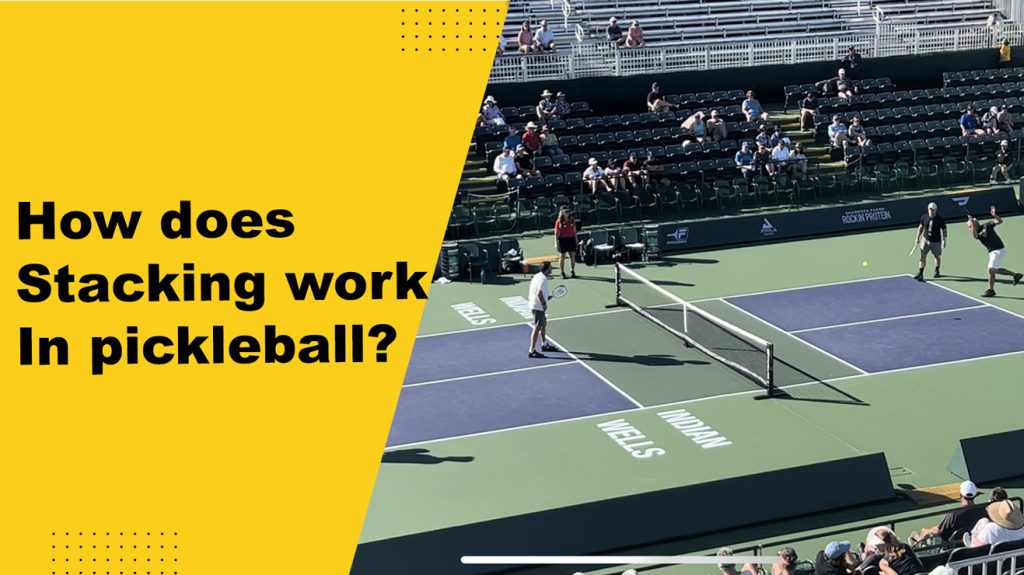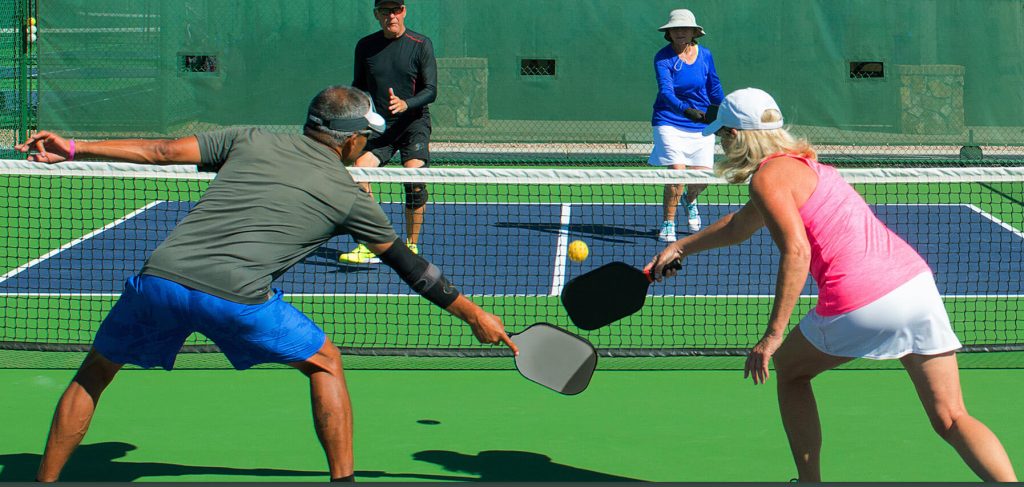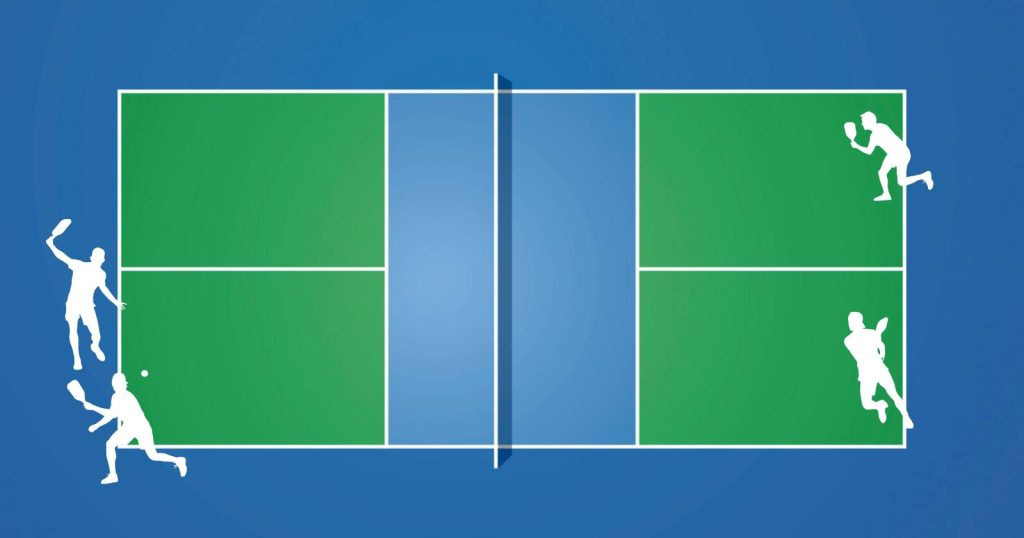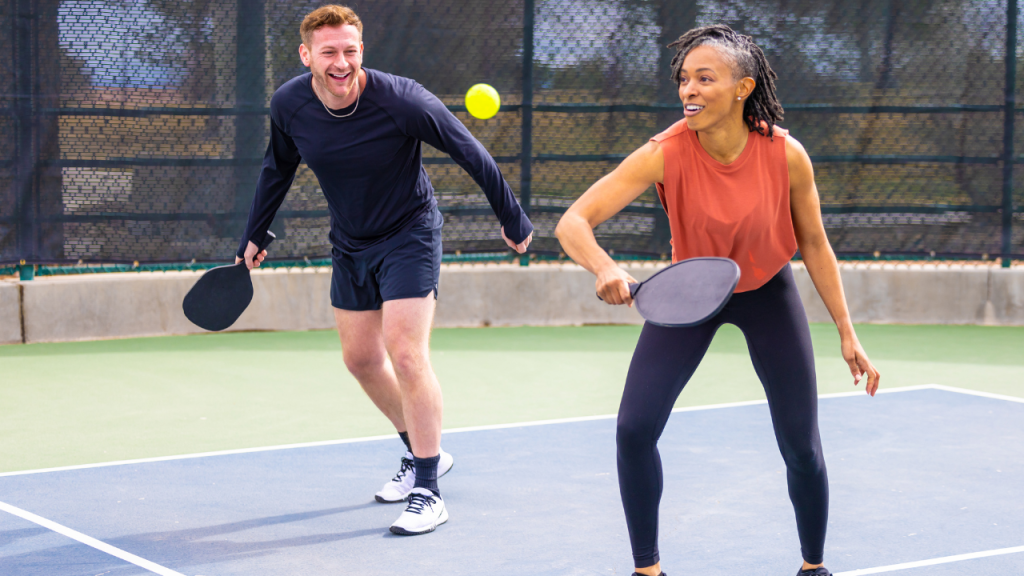
Have you ever wondered what exactly “stacking” means in the context of pickleball? If so, you’ve come to right place. In this comprehensive guide, we will delve into the intricate workings of stacking and unravel its mysteries. Whether you’re a beginner looking to understand strategy or an experienced player seeking to refine your skills, this article will provide you with valuable insights into how stacking works in pickleball.
Understanding the Essence of Stacking

Before delving into the details, let’s establish a clear understanding of what stacking entails. In pickleball, stacking refers to the strategic repositioning of players on the court during the serve and the subsequent engagement. By adopting a strategic lineup, players aim to optimize court coverage and gain a tactical advantage, enhancing their chances of securing victory.
The Art of Stacking: Breaking It Down
To gain proficiency in stacking, it is crucial to grasp the concepts and techniques that underpin this strategic maneuver. Let’s explore the key aspects of stacking in pickleball.
1. The Initial Serve and Return
In the stacking formation, the serving team positions its players in a predetermined formation. Often, this involves placing the stronger player on the right side of the court (for right-handed players) or the left side (for left-handed players). The weaker player occupies the opposite side, ensuring the team’s dynamic and strategic advantage.
2. The Rotation
Once the initial serve occurs, stacking comes into play during the rotation phase. At this point, the positioning and realignment of players contribute to creating an advantageous setup for the serving team. By adapting to the court’s changing dynamics, players can optimize their positioning for both offensive and defensive coverage.
3. Transitional Stacking
During the transition from the serve-return phase to the subsequent gameplay, players may adopt transitional stacking. This strategic maneuver allows players to maintain their positioning advantage while remaining adaptable to the evolving dynamics of the game. Effective transitional stacking can facilitate seamless coordination between partners and capitalize on scoring opportunities.
4. Communication and Coordination
Stacking is not solely about physical positioning. Communication and coordination between teammates are essential components of effective stacking. Consistent verbal cues, plan formulation, and coherent execution ensure that players remain in sync, maximizing their chances of success on the court.
“Effective communication and coordination between teammates are the bedrocks of successful stacking. Collaborative efforts breed victory.” – Unknown

Tips and Tricks to Master Stacking
Now that we have explored the fundamentals of stacking, let’s dive into some actionable tips and tricks that can help you become an adept stacker.
A. Anticipate and Adapt
Being proactive and anticipating your opponents’ moves will allow you to adapt your stacking strategy accordingly. By closely observing their playing patterns, you can plan ahead and position yourselves advantageously on the court.
B. Understand Your Teammates’ Strengths
An integral part of stacking is capitalizing on your teammates’ strengths. By understanding each player’s unique skill set, you can position yourself strategically for optimal court coverage. For instance, if your teammate has a powerful backhand, consider positioning them on the side of the court where their strength can be maximized.
C. Practice Communication

Clear communication is the backbone of any effective stacking strategy. Engage in constant communication with your teammate to relay information about opponents’ movements, scoring opportunities, and court positioning. This helps to synchronize your movements and maintain a united front during gameplay.
- Always call out the side of the court you’re covering.
- Verbally communicate your partner’s weaknesses and strengths to adapt your stacking on the go.
D. Adapt to Varying Stacking Strategies
Different situations call for different stacking strategies. Recognize that stacking can vary based on your team dynamic, individual skill sets, and gameplay situations. Embrace flexibility and be ready to adapt your stacking formation accordingly.
“Adaptability is the key to unlocking the true potential of stacking. Stay flexible, and success will follow.” – Unknown
Conclusion
In conclusion, stacking in pickleball is a versatile strategic maneuver that involves the careful positioning and adaptation of players on the court. By mastering the art of stacking, players gain a competitive edge, capitalize on their strengths, and optimize court coverage. Remember to anticipate, communicate, and adapt your strategy according to the ever-changing dynamics of the game. With practice and a solid understanding of these stacking principles, you’ll be well on your way to becoming a skilled and strategic pickleball player.
So, next time you step onto the pickleball court, put your stacking knowledge into action and watch your performance soar to new heights!

I am Michael Wanner, an experienced and educated expert in the field of pickleball. I hold a degree in Sports Science from Cleveland State University, Ohio, USA. My expertise lies in the technical aspects of pickleball and how to play it effectively. I have spent many years playing and coaching pickleball and have a wealth of knowledge to share with my readers. I am a valuable resource for anyone looking to improve their pickleball skills and strategies.
